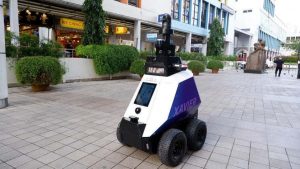1. One thing that helpsSubscription-based AI Hearing Aid

Medical technology advances have been astounding over the last decade or so. One thing that seems to have been left behind though is the humble hearing-aid. I know from the many complaints my Dad had about his, that just "turning up the volume" does not help most people with hearing loss. There are good hearing aids out there but they are prohibitively expensive. Whisper wants to change the market with their hearing aids powered by AI.Whisper’s hearing aids use "audio segmentation". It identifies the components of the sounds it detects similarly to how photo applications can tell where people's faces are in photos. It then manages overlapping sounds and boosts the right ones (using a proprietary wireless ear device) so the person wearing them will have a clearer experience.To combat the previously mentioned pricing issues, Whisper offers its services through a subscription model without a large upfront payment for the device. This model allows the customers to benefit from updates to the algorithm for better quality of life usage.With close links between hearing loss, dementia and depression, this is an area that is desperate for innovation and improvement.2. One to be wary of

Singapore's Robot CopsOver in Singapore, their Home Team Science and Technology Agency is deploying two robots to patrol the streets. “Xavier”, as these robots are called, will look for “undesirable social behaviors” in real-time. Singapore is known for its strict enforcement of the law, and having spent a lot of time there I can attest that you rarely feel unsafe no matter what time of night you might be wandering around. To beef up the guard duty, these robots will police the streets for violations like smoking where you shouldn't, breach of pandemic restrictions, vehicles on walkways and even “improperly parked bicycles”. Its route is preconfigured but it can avoid people and objects as required. If it detects a violation it first reports it through to the central police hub and then it will "confront" violators with ..... a warning message. OK, there's not too much to be wary about here just now. However, let's watch this space for any developments in semi-autonomous robot policing!3. One to amazeTouchable Holograms[embed]https://youtu.be/8N_Cj3ZS9-A[/embed]In this iconic scene, Princess Leia sends a distress call to Obi-wan Kenobi using a holographic message. A team at the University of Sussex created a similar device that not only can produce a hologram but also produce sound and tactile feeling! This is super high-tech but you would be surprised to know that it uses technology inspired by the old CRT TV’s- the big bulky things we used to watch in the 80s and 90s. [embed]https://youtu.be/tzWP-NL3Lck[/embed]What makes all this possible? The hologram uses an illuminated tiny bead around 2 millimeters in size to draw an image. Ultrasound speakers produce soundwaves to levitate the tiny bead and manipulate its position in midair. LED lights then illuminate the bead with red, green and blue light.This device is called the Multimodal Acoustic Trap Display (MATD) because the bead is essentially trapped in mid-air using sound waves. The bead moves in a pattern so quickly that our eyes are tricked into thinking it’s making a solid image. If viewed in person, there is no flickering in the image as can be seen in the video.This device not only draws images, but the MATD can also generate vibrations through the bead and produce sound. So yes, these holograms can talk! Not just that but using this sound the hologram can also generate tactile feedback so you can feel the surface of the image being generated. Researchers are now working on including more than one bead in the MATD for better images, improved tactile feedback and crisper sounds. The belief is that this technology can be used to manipulate matter without touching it. Applications for this include mixing chemicals safely or levitating drugs inside human tissues for more effective delivery.My mind is blown!